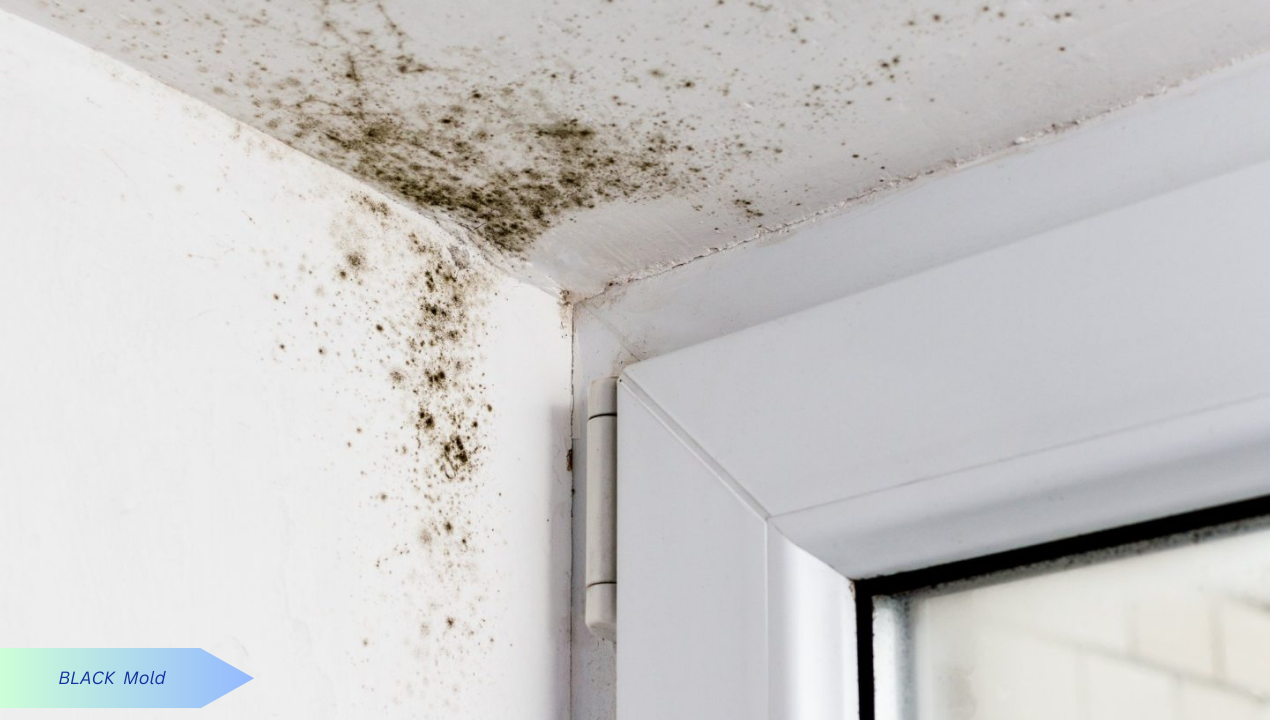Mold is a type of fungus that thrives in moist environments. It’s essential for breaking down organic matter, but when it moves into our homes, it becomes a problem.
Common molds include Cladosporium, Penicillium, and Aspergillus. These molds vary in color from green to white, often forming harmless colonies unless you’re allergic.
Black Mold
The term “black mold” often refers to Stachybotrys chartarum, a species known for its dark greenish-black color. It requires constant moisture to grow, often found in areas with persistent water damage. But why does it have such a bad reputation?
Health Concerns
Black mold is infamous for its potential health risks. It produces mycotoxins, which can cause symptoms like respiratory issues, headaches, and fatigue. People with allergies, asthma, or weakened immune systems are particularly vulnerable.
Regular Mold: More Common, Less Scary
Regular molds, while still a nuisance, are typically less harmful. They can cause minor allergic reactions but generally aren’t as toxic. These molds grow on food, fabric, and walls, often appearing as green, white, or even pink spots.
Identifying Mold: Is It Black Mold?
So, how can you tell if it’s black mold? While color can be an indicator, it’s not definitive. Many molds appear black, and Stachybotrys can sometimes look different. If you’re unsure, it’s best to get a professional inspection.
Preventing Mold Growth
Whether dealing with black or regular mold, prevention is key. Here are some tips:
- Control Humidity: Keep indoor humidity levels below 60%.
- Fix Leaks: Repair any leaks in roofs, windows, and pipes immediately.
- Ventilate: Use exhaust fans in kitchens and bathrooms.
- Clean Regularly: Use mold-killing products in damp areas.
Conclusion
While black mold sounds intimidating, understanding its nature and health implications can help you manage it effectively. Regular maintenance and prompt attention to moisture issues can keep both black and regular molds at bay. Remember, when in doubt, consult a professional to ensure your home remains a safe and healthy environment.
Is there a particular room in your house where you’ve noticed mold? Perhaps a leaky basement or a humid bathroom? Take action today to prevent mold from making itself at home!
FAQs
1. What is the main difference between black mold and regular mold?
Black mold, specifically Stachybotrys chartarum, is known for its dark color and potential health risks due to mycotoxins. Regular molds come in various colors and are generally less harmful.
2. Can all black molds produce toxins?
Not all black molds produce toxins, but Stachybotrys chartarum is particularly known for producing mycotoxins, which can be harmful to health.
3. What health problems can black mold cause?
Black mold exposure can lead to respiratory issues, headaches, fatigue, and allergic reactions. Those with asthma or weakened immune systems are at higher risk.
4. How can I identify black mold in my home?
While black mold is often dark greenish-black, color alone isn’t definitive. It’s best to get a professional inspection for accurate identification.
5. Are regular molds harmful?
Regular molds can cause minor allergic reactions but are generally less toxic than black mold. However, any mold can be problematic in large quantities.
6. How can I prevent mold growth in my home?
Control humidity levels, fix leaks, ensure proper ventilation, and clean damp areas regularly to prevent mold growth.
7. What should I do if I find mold in my home?
Identify and eliminate the moisture source, clean the area with mold-killing products, and consider professional help if the mold is extensive or persistent.
8. Can mold grow on any surface?
Mold can grow on various surfaces, including wood, carpet, food, and paper, as long as moisture is present.
9. Is it safe to remove mold myself?
For small areas, DIY cleaning with appropriate safety measures is possible. For larger infestations, especially of black mold, professional remediation is recommended.
10. Does bleach kill mold?
Bleach can kill surface mold but might not penetrate porous materials, allowing mold to return. Specialized mold cleaners are often more effective.
If you have more questions or concerns, it’s always wise to consult a mold remediation expert to ensure your home is safe and mold-free!
